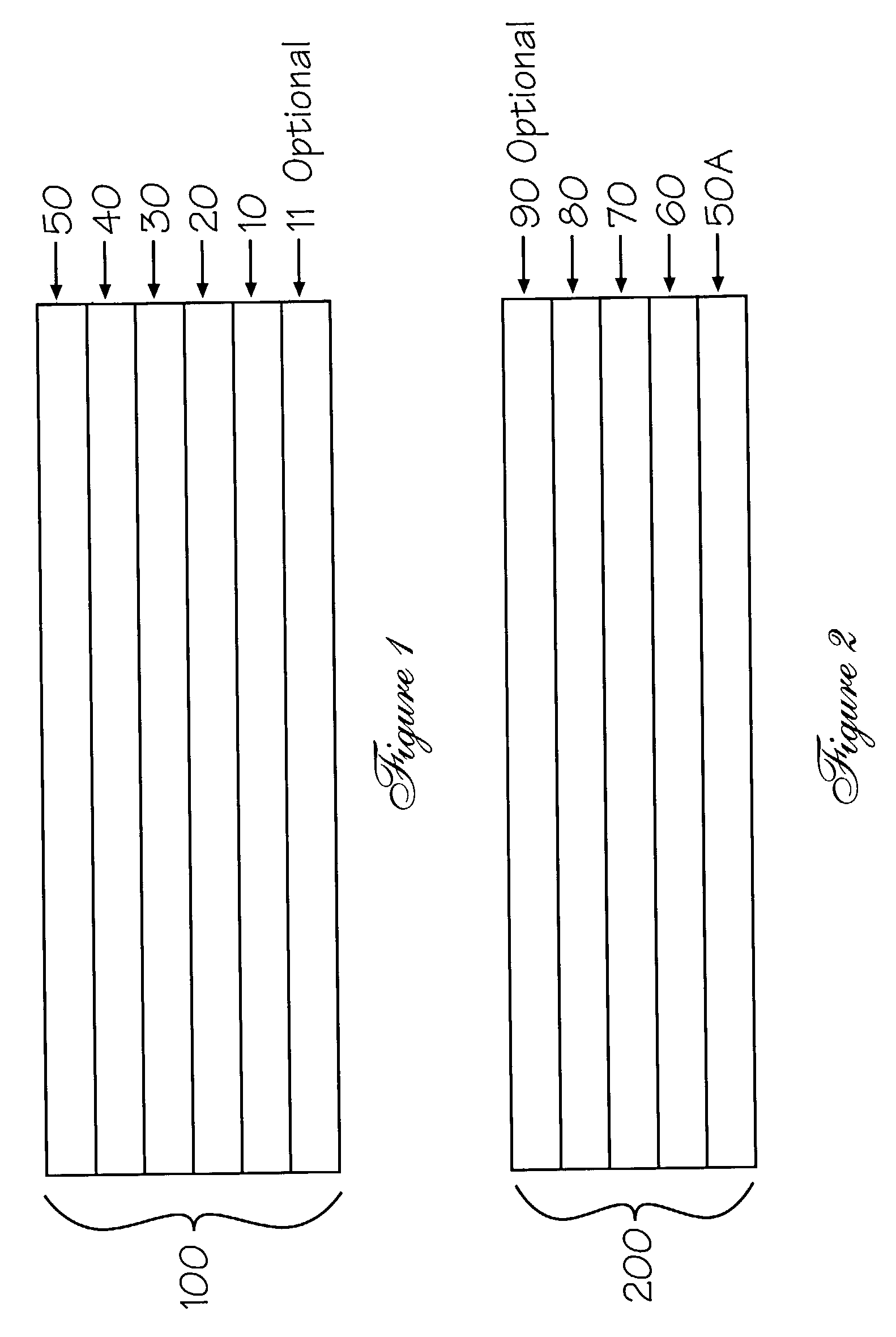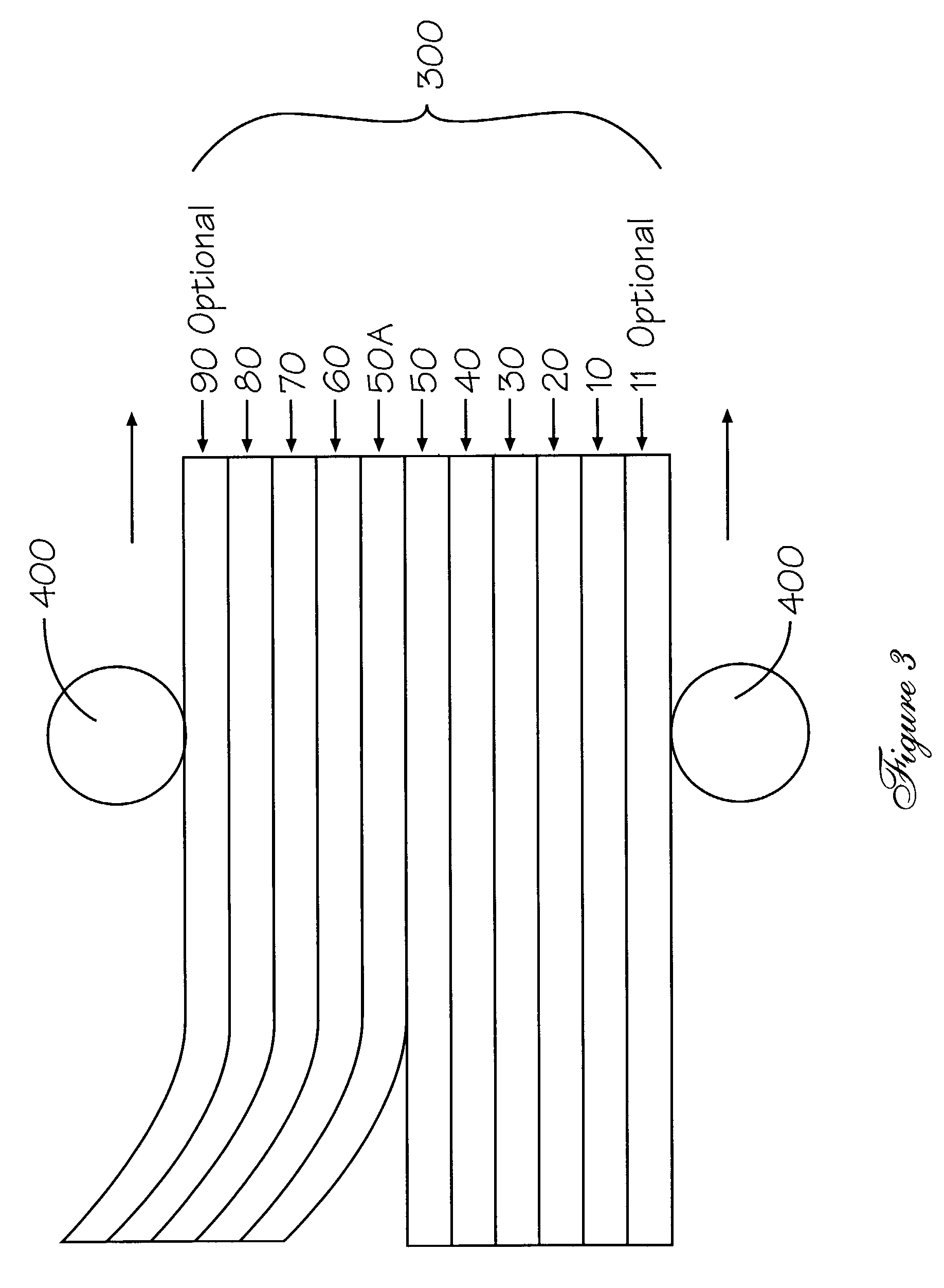Laminated imaged recording media
a technology of imaged recording media and laminated inkjet, which is applied in the field of laminating inkjet imaged articles, can solve the problems of unauthorized duplication, inability to provide highly water resistant or waterproof characteristics of inkjet imaged products, and easy fade of inkjet inks with tim
- Summary
- Abstract
- Description
- Claims
- Application Information
AI Technical Summary
Benefits of technology
Problems solved by technology
Method used
Image
Examples
Embodiment Construction
[0035]Generally speaking, a method is described for manufacturing an identification document that can contain both common and unique information describing the specific document holder. The present invention encompasses a process for manufacturing a recording media that is capable of being imaged by multiple imaging technologies and to generating an article that is designed to reduce the potential that it can later be illicitly duplicated or modified. Such imaging technologies include, but are not limited to, thermal transfer, ink-jet printing or plotting, screen printing, handwriting with ink pens (either aqueous or nonaqueous based inks), offset printing such as lithographic, gravure and intaglio printing, and printing or copying by electrographic, xerographic, color or black and white electrophotographic (using either liquid or dry toners), and laser printing.
[0036]As is well understood in the art, the design of such a recording medium presents great difficulties for accurate, hi...
PUM
| Property | Measurement | Unit |
|---|---|---|
| thickness | aaaaa | aaaaa |
| thickness | aaaaa | aaaaa |
| thickness | aaaaa | aaaaa |
Abstract
Description
Claims
Application Information
 Login to View More
Login to View More - R&D
- Intellectual Property
- Life Sciences
- Materials
- Tech Scout
- Unparalleled Data Quality
- Higher Quality Content
- 60% Fewer Hallucinations
Browse by: Latest US Patents, China's latest patents, Technical Efficacy Thesaurus, Application Domain, Technology Topic, Popular Technical Reports.
© 2025 PatSnap. All rights reserved.Legal|Privacy policy|Modern Slavery Act Transparency Statement|Sitemap|About US| Contact US: help@patsnap.com



